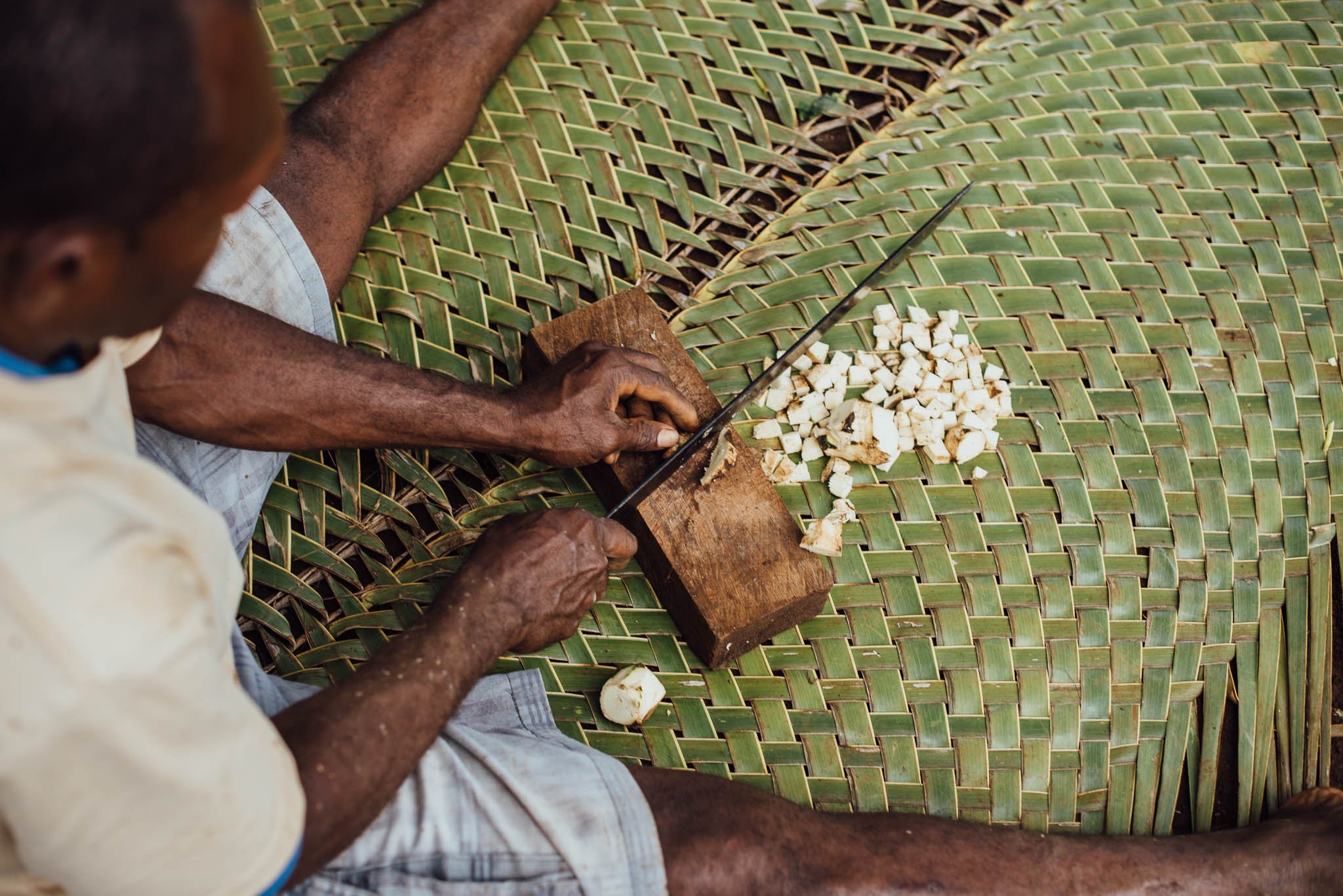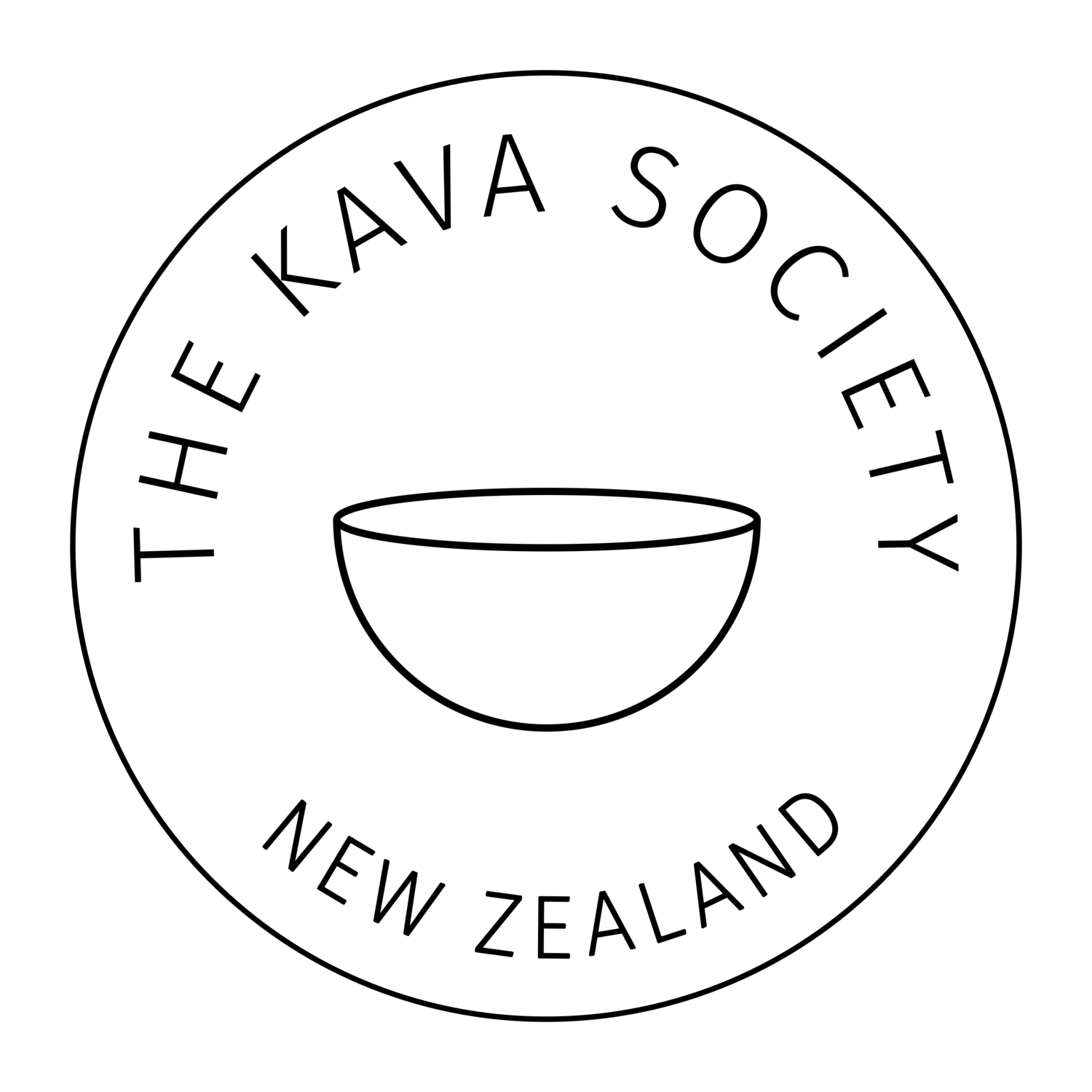
Kava Forms and Types: From Traditional Roots to Modern Forms
Introduction and Our Experience
Kava was originally drunk fresh (“green”), immediately after harvest, and this practice continues in its birthplace, Vanuatu. However, green kava spoils quickly unless frozen, and preparing it from freshly dug roots can be labor-intensive. Outside traditional villages in Vanuatu, people rely on more modern forms of kava, predominantly dried kava.
Unfortunately, kava processing can often diminish its properties, natural aromas, and taste, especially when not properly cleaned or dried in an uncontrolled environment. From the early days of our Auckland University Kava Society, we were struck by the significant quality difference between green kava in Vanuatu and the kava powders available in New Zealand and globally. To put it simply, it was like the difference between freshly squeezed juice from freshly harvested fruits versus juice made from old, spoiled fruits that were left to dry to bone on the counter and then crushed into powder, only to be mixed again with water. This wasn’t perhaps too surprising considering the poor quality control and processing methods prevalent in the industry (with much of the kava being poorly cleaned, poorly dried on rooftops and crushed up in non-food grade environments). We were convinced it was possible to do better than that.
Our mission thus became to collaborate with partners in Vanuatu to develop methods for turning freshly harvested green kava into powders that retain far more freshness and authentic properties of green kava than any powders on the market. It's been a challenging journey, but we believe our kava products are now as close to freshly harvested green kava as modern technology allows (you can read more about our process here). The experience they offer is thus also very close to the authentic original experience of drinking green kava immediately after harvest.
We offer our kava two forms: traditional ground powder and instant kava. Below, we provide detailed descriptions of these forms, as well as two other forms we used to offer but no longer carry, described here for educational purposes.
Note: In New Zealand, kava can only be sold as food in its original form, i.e., consisting solely of kava roots or extracted with cold water without chemical solvents. We fully support this approach and thus only sell kava that adheres to these principles, avoiding chemical kava extracts or other products inaccurately labeled as "kava." We agree with New Zealand regulators and scientists that such chemical extracts are not equivalent to traditional kava in safety and should not be marketed as such, just as caffeine powder should not be sold or marketed as coffee.
Forms of Kava
Processing of our traditional grind kava in Vanuatu
Traditional Grind Kava- The classic version of kava roots. Great for those who like the more traditional and interesting way of preparing and drinking kava, just the way it's been done for centuries around the South Pacific. Our kava roots are always processed directly from freshly harvested, carefully cleaned and peeled roots that are then carefully dried in a controlled environment to ensure we preserve as much of the fresh kava’s taste, aroma and properties as possible. After the drying process, the roots are ground into a medium-grind powder. As this powder contains all elements of kava roots (including coarse fibres) it must be strained prior to consumption. Check out our kava preparation site for more details.
a small box with our instant kava sachets
Instant Kava - Our high quality instant kava is a fantastic option for beginners, those who cannot be bothered with the traditional preparation techniques and seasoned drinkers looking for a more convenient option. Our instants are made simply by dehydrating freshly prepared, strong, green kava (obtained through a cold water extraction of freshly harvested kava roots) until all that remains are the pure instant granules. The instant powder is incredibly fine, smooth and potent. It can be mixed directly with water or your favourite juice (no straining or kneading necessary!). Instant kava is more expensive than any other type of kava, but it also offers a remarkable combination of potency, smoothness, ease of drinking and convenience. It is usually enough to use just 30-50% of the amount of traditional kava to get similar effects.
Ready to Drink Kava. As the name suggests, this form of kava is simply pre-made kava drink that can be enjoyed without any additional preparation. As such, it is the most convenient and easy-to-consume form of kava. We used to sell shelf-stable, ready-to-drink kava made from either fresh (green) roots or from our dry powders. Unfortunately, due to the COVID-19 pandemic, huge logistical issues involved with sourcing green kava, we suspended production of our bottled kava in early 2020. Currently, the only way to buy ready to drink (though no longer shelf-stable), pure kava in New Zealand is to order some from our friends at the Four Shells Kava Bar in Auckland.
Micronised Kava - This is a slightly more controversial form of kava. In essence, micronised kava promises the convenience of instant powder at a more affordable price. This is achieved by grinding the kava root so fine that the resulting powder can in theory be mixed directly with water or any other soft drink (just like with the instant kava, no filtering or kneading necessary). This process requires extra work but nowhere near as much work as the making of instant or ready-to-drink kava and hence micronised kava can be relatively cheap. However, the problem is that even the finest powder is never as smooth as instant or properly strained traditional kava and hence for some people this form of kava is more likely to cause stomach upsets than any other form of kava. For this reason we’ve made a decision not to offer micronised kava in our online shop. We understand that the vast majority of people could enjoy small amounts of it without any kind of discomfort. However, for a small minority (many of whom were first-time users attracted by the lower price and convenience) it was causing issues and ultimately ruining their experience with kava.
Types of Kava
All kavas are generally known for their ability to promote calmness, relaxation an a sense of well-being without diminishing mental clarity. However, there are many different kava varieties and each variety has its own unique combination of kavalactones (expressed in a simplified form as the kava chemotype) which, together with such factors as the method of consumption and overall potency, will determine its specific effects. We can loosely differentiate between three broad types of kava varieties:
Heady/Quick Acting - Kavas with higher concentrations of such kavalactones as kavain and yangonin (mostly those with numbers 4 and 3 closer to the left of their chemotype) tend produce more heady/cerebral, uplifting and cheerful effects. In general, heady kavas are good for day-time (late afternoon) drinking as they keep your mind not just relaxed but also quite clear and alert. Heady kavas have more effects on your mind than on your body. They promote a gentle sense of well-being, contentment and happy unconcern. They are great for stressful situations and creative work. Such kavas are also good for social gatherings and parties as they encourage conversations and camaraderie. They are generally known to be fast acting, but relatively short-lasting kavas.
Our favourite heady kavas: Kelai and Palarasul
Heavy - Kavas with higher concentrations of the heavier kavalactones, namely dihydrokavain, dihydromethysticin and methysticin, (i.e. those with 2, 6 and 5 closer to the left, with 2 and 6 being far more desirable than 5) are considered "heavier" kavas. They are known to be more sedating and to be able to produce more effects on your body (the so-called "body-melting" effect) than on your mind. In general, they tend to promote much deeper relaxation and sedation. Their taste is often a bit more bitter and their effects take longer to manifest themselves and last longer than those of the headier kavas. They are generally better for night-time drinking and not ideal for socialising or creative work.
Balanced- Balanced kavas offer a good balance of the two types of effects. As such, these are the most versitile and popular kavas. Depending on dosage, they are used for both day-time and night-time drinking and are considered to be great for both beginners and those experienced drinkers who enjoy the full spectrum of beautiful kava effects.
Our favourite balanced kavas: Pacific Elixir, Instant Green and Melo Melo
Our favourite heavy kava: Borogoru


